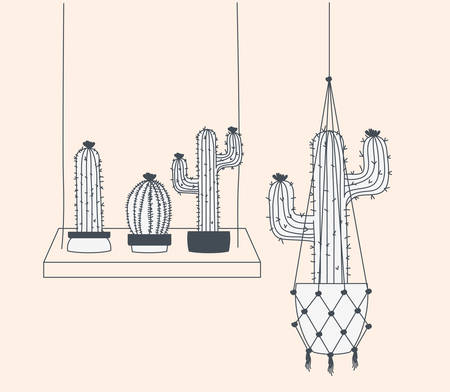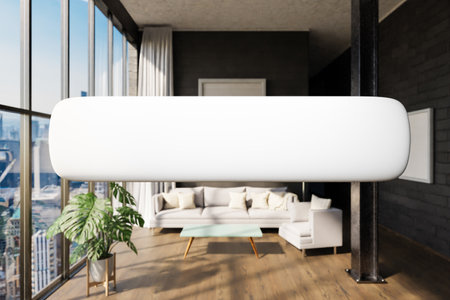Gilded Age Glamour: Chandeliers in Early American Mansions
If you ever step into a grand old American mansion built around the turn of the 20th century, chances are your eyes will be immediately drawn upward. During the Gilded Age—a period marked by booming industry, opulent lifestyles, and architectural ambition—crystal chandeliers became nothing short of an obsession among America’s wealthiest families. These shimmering statement pieces weren’t just functional; they were symbols of status and taste, setting a dramatic stage for society gatherings and family celebrations alike.
The best homes of this era, especially along New York’s Fifth Avenue or inside sprawling Southern estates, boasted imported European crystal chandeliers that caught every glimmer of candlelight or newly installed electric bulbs. The effect? A dazzling cascade of light that made every party feel like something out of a Gatsby novel. For homeowners, investing in these ornate fixtures was about more than illuminating a room—it was about making a lasting impression.
More than mere lighting, these Gilded Age chandeliers established a legacy for bold, expressive fixtures in American interiors. Their influence lingers today, inspiring designers who seek to capture that same sense of grandeur and drama with contemporary statement lighting. In many ways, the story of iconic American lighting begins here—with the sparkling glamour suspended high above the marble floors and velvet drapes of yesteryear’s mansions.
2. Mid-Century Modern Marvels: Atomic and Sputnik Fixtures
The mid-20th century was a transformative era for American interior design, marked by a fascination with progress, technology, and all things futuristic. During the 1950s and 60s, the nation’s optimism soared alongside the race to space, and this cosmic energy found its way into the heart of American homes through statement lighting fixtures inspired by the atomic age and the Sputnik satellite.
Sparking Imagination: The Birth of Atomic Lighting
Atomic light fixtures captured the spirit of experimentation that defined postwar America. Characterized by playful geometric shapes, starburst motifs, and daring combinations of metals and glass, these designs echoed both scientific discovery and artistic rebellion. Homeowners were eager to trade in traditional chandeliers for lights that looked straight out of a sci-fi flick or a Jetsons episode—pieces that didn’t just illuminate rooms but also sparked conversation.
The Iconic Sputnik Chandelier
If there’s one fixture that truly encapsulates this period, it’s the Sputnik chandelier. Named after the first man-made satellite launched by the Soviets in 1957, this dazzling centerpiece featured radiating arms tipped with bulbs or crystals, emulating a burst of light or an exploding atom. Instantly recognizable and unapologetically bold, Sputnik fixtures became a symbol of modernity across suburbia and urban penthouses alike.
Key Features of Atomic & Sputnik Lighting
| Design Element | Description | Era Popularity |
|---|---|---|
| Starburst Motifs | Sun-like rays or explosive forms crafted from brass, chrome, or gold finishes. | 1950s–1960s |
| Geometric Shapes | Orbital rings, spikes, spheres, and intersecting lines that mimic atomic models. | 1950s–1960s |
| Mixed Materials | Combinations of metal, colored glass, lucite, and occasionally wood accents. | 1950s–1960s |
| Statement Scale | Larger-than-life fixtures intended to be focal points within open-plan living spaces. | Late 1950s–1970s |
The Lasting Impact on American Style
The atomic and Sputnik lighting craze wasn’t just a fleeting trend—it set a precedent for boldness in home décor. These pieces encouraged Americans to embrace their individuality and dream big, both literally (as in reaching for the stars) and figuratively (by making audacious design choices). Today, vintage originals are highly sought after in antique shops, while contemporary designers continue to reinterpret these iconic forms for modern interiors. The legacy of mid-century modern marvels lives on—reminding us that sometimes, all it takes is one striking fixture to electrify an entire era.

3. Industrial Revival: Raw and Exposed Lighting in Lofts
As the late 20th century rolled in, American cities like New York, Chicago, and San Francisco witnessed a dramatic shift in urban living. Old factories and warehouses were transformed into spacious lofts, giving birth to a new design movement: industrial style. At the heart of this aesthetic revolution was a bold embrace of statement lighting fixtures that celebrated the raw and the unfinished.
The Allure of Exposed Bulbs
Gone were the days of ornate chandeliers or delicate glass shades. Instead, designers and homeowners leaned into Edison bulbs—naked, glowing filaments encased in clear glass—dangling from cords or simple metal fixtures. The exposed bulb became an emblem of authenticity, nostalgia, and unfiltered creativity. This look didn’t just light up rooms; it illuminated a cultural longing for honesty and simplicity amid the chaos of city life.
Metal Pendants and Urban Edge
Industrial pendants—often fashioned from steel, iron, or brushed aluminum—hung above kitchen islands, dining tables, and communal spaces. Their utilitarian origins as factory lighting fixtures made them perfect for loft conversions where high ceilings and open floor plans demanded bold visual anchors. These pendants added both drama and functionality to spaces that balanced modern comfort with historic grit.
A Lasting Impact on American Design
The industrial revival wasn’t just a fleeting trend—it changed the way Americans thought about home lighting. Today, raw and exposed fixtures are still celebrated not only for their striking looks but also for their connection to the country’s manufacturing roots. The industrial statement piece remains a staple in countless homes, restaurants, and creative studios across the United States.
4. Art Deco Drama: Glamorous Geometry and Glass
The Art Deco era, roaring through the 1920s and 1930s, brought a bold transformation to lighting design in America. This movement was all about drama, glitz, and streamlined modernity—think of geometric patterns, opulent materials, and the shimmer of glass that caught every eye. Lighting fixtures became more than just functional objects; they turned into iconic statements that defined American glamour and progress.
The Allure of Geometric Design
Art Deco lighting was instantly recognizable for its sharp lines, stepped forms, and symmetrical shapes. Designers drew inspiration from skyscrapers, sunbursts, and even the Chrysler Building’s spire, reflecting America’s fascination with innovation and urban sophistication. These fixtures often featured zigzags, chevrons, and angular motifs that brought a sense of movement and energy to interiors.
Luxurious Materials Meet Dazzling Glass
Materials played a starring role in Art Deco lighting. Polished chrome, glossy black lacquer, and gilded finishes set the scene for opulence. But it was glass that truly stole the spotlight—etched, frosted, or colored in rich jewel tones. From dramatic chandeliers in hotel lobbies to sleek sconces lining theater walls, these fixtures created an atmosphere of elegance that felt both modern and timeless.
Iconic American Art Deco Landmarks & Their Lighting
| Landmark | Lighting Feature | Signature Style |
|---|---|---|
| Chrysler Building (NYC) | Crown Spire Lights | Radiating triangles & stainless steel gleam |
| Radio City Music Hall (NYC) | Grand Auditorium Chandeliers | Sculptural glass & geometric metalwork |
| Union Terminal (Cincinnati) | Main Rotunda Fixtures | Sunburst patterns & amber glass glow |
| Pennsylvania Station (Philadelphia) | Pendant Lights & Sconces | Sleek lines & frosted glass globes |
Lasting Legacy in American Culture
The drama of Art Deco lighting still sparks our imagination today. Whether it’s a vintage pendant in a SoHo loft or a reproduction sconce in a retro-inspired home theater, the luxurious geometry and brilliant glasswork continue to evoke the Jazz Age spirit. These fixtures serve as glowing reminders of a time when America lit up the world stage with confidence—and impeccable style.
5. Contemporary Cool: Statement LEDs and Sculptural Pieces
In the ever-evolving world of American interior design, the latest chapter in statement lighting is all about pushing boundaries and turning everyday illumination into show-stopping art. Today’s trend centers on sculptural LED fixtures—sleek, daring, and futuristic—that refuse to blend into the background. These aren’t just light sources; they’re conversation starters and focal points that command attention the moment you walk into a room.
The Rise of LEDs: Efficiency Meets Aesthetics
LED technology has revolutionized what’s possible in lighting design. Gone are the days when energy-efficient meant uninspired. Now, designers can bend, twist, and loop LEDs into striking forms that defy gravity and expectation. In modern American homes, it’s common to find dramatic ring pendants hovering over dining tables or geometric wall sconces casting bold shadows across minimalist spaces—all while saving energy and lasting for years.
Sculpture in the Spotlight
Lighting has become a form of sculpture, with pieces inspired by everything from abstract art to nature’s organic curves. Take the popularity of fluid wave-like chandeliers or clustered bubble fixtures: these designs blur the line between functional lighting and gallery-worthy installations. Their presence transforms living rooms, entryways, and even bedrooms into immersive experiences—each fixture telling its own visual story.
American Innovation Shines Through
This new era celebrates not only global influences but also homegrown American creativity. Designers from Brooklyn to Los Angeles are crafting one-of-a-kind pieces using unexpected materials like resin, brass mesh, or upcycled glass. The result? Lighting that feels personal, expressive, and distinctly contemporary—mirroring America’s spirit of innovation and individuality.
Ultimately, today’s statement fixtures do more than just illuminate; they define space, set mood, and showcase the homeowner’s taste for boldness and originality. In 21st-century America, lighting isn’t just practical—it’s pure personality in motion.
6. American Icons: Influential Designers and Cultural Touchstones
From the neon glow of Times Square to the swinging pendants in mid-century diners, statement lighting has always played a starring role in shaping America’s visual identity. At the heart of this story are visionary designers whose creations became household names. George Nelson’s Bubble Lamps brought an ethereal glow to 1950s homes, while Louis Comfort Tiffany’s stained glass masterpieces remain synonymous with Gilded Age luxury. Fast-forward to the groovy ‘70s, and you’ll find Verner Panton’s psychedelic lamps turning up in everything from Andy Warhol’s Factory to pop-art-inspired movie sets.
The Brands That Lit Up America
Brands like Artemide, Kartell, and West Elm have translated bold design into accessible style for American homes, making dramatic fixtures a must-have for anyone looking to make a statement. The iconic Eames Hang-It-All, though primarily a coat rack, inspired an entire era’s approach to playful, functional décor—including lighting that blurred the lines between art and utility.
Lights, Camera, Action: Hollywood’s Glowing Influence
No conversation about American statement lighting is complete without Hollywood. Remember the shimmering chandelier in “The Great Gatsby” or the moody desk lamps in “Mad Men”? Movies and TV shows have cemented these fixtures as cultural touchstones, influencing how generations decorate their own homes. Even today, a Sputnik chandelier or neon sign instantly conjures images of classic films and retro diners.
Cultural DNA: More Than Just Illumination
Statement lighting isn’t just about brightening rooms—it’s about expressing personality, nostalgia, and the spirit of innovation. Whether it’s Frank Lloyd Wright’s Prairie-style glass panels or the futuristic curves of contemporary LED art pieces, these fixtures capture the essence of American creativity. Each era’s signature lights tell a story—not just of evolving technology and taste, but of a nation continually reinventing itself through design.


